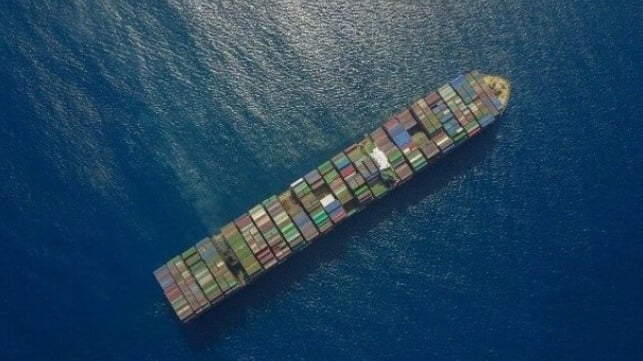Xeneta: Overcapacity and Falling Volumes Will Challenge Market in 2023

After over two years of rising rates and overstretched capacity, the rapidly cooling ocean freight market is setting up for an “extremely challenging 2023,” according to Oslo-based Xeneta. The operator of a market intelligence platform predicts that with a continuing decline in cargo volumes, ocean freight rates will drop significantly prompting carriers to increasingly idle their fleets after two years when they pressed every available ship and container into service.
From climbing to historical highs during the global pandemic, ocean freight rates have fallen away – and in the case of spot rates, dramatically so – since the summer, highlights Xeneta. Using crowd-sourced data from leading global shippers their analysts are predicting that the trends will continue in 2023 resulting in a further 2.5 percent decline in container volumes.
“The cost-of-living crisis is eating into consumer spending power, leaving little appetite for imported, containerized goods. With no sign of a global panacea to remedy that, we’d expect ocean freight volumes to drop,” predicts Patrik Berglund, CEO of Xeneta. “If the economic situation deteriorates further, it could be even more.”
Continuing declines in volumes will result in an “out of balance” situation for the market predicts Xeneta leading to further overcapacity and declines in utilization. They point to the potential addition of as much as 1.65 million of TEU capacity from new vessels, which will only be partially offset by the demolition of older vessels. Xeneta expects a nearly six percent increase of capacity (5.9 percent) noting “even if demolitions double from our current level of expectations, the industry would still be looking at an almost 5 percent expansion.”
Berglund expects that the carriers will continue to struggle with overcapacity as volumes fall further in 2023 leading to a forecast that up to 1 million TEU or “maybe even more” will be idled. Despite that, he notes that the combination of declining volumes and overcapacity as new tonnage enters the market will continue to negatively impact rates in 2023.
“We expect to see significant reductions. Carriers have proved adept at protecting and elevating rates during COVID, but with too much capacity, and easing port congestion, on most major trade lanes they’ll be fighting losing battles in 2023,” says Berglund. “We could see spot rates on some key corridors drop below pre-pandemic levels during the first half of 2023, while long-term rates will fall rapidly as older, expensive contracts expire and new, far lower contracts are signed. However, long-term rates will not drop below spot rates during the first half of 2023.”
Berglund concludes that 2023 will be a challenging year for both shippers and carriers. Negotiations to renew long-term contracts will be complicated by shippers planning lower volumes while carriers will be seeking to maximize volumes. The market will be further complicated by economic uncertainty, geopolitical concern (“not just relating to Ukraine”), ongoing industrial action on logistics chains, China’s continued zero-COVID policy, and the combination of weak demand, easing congestion and increased freight capacity.
